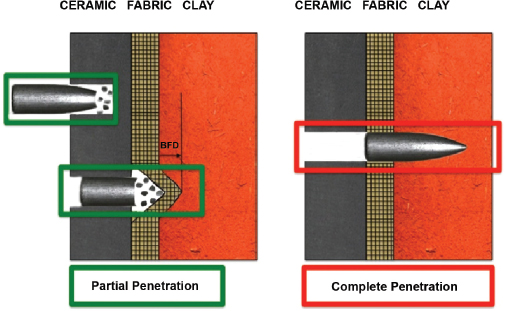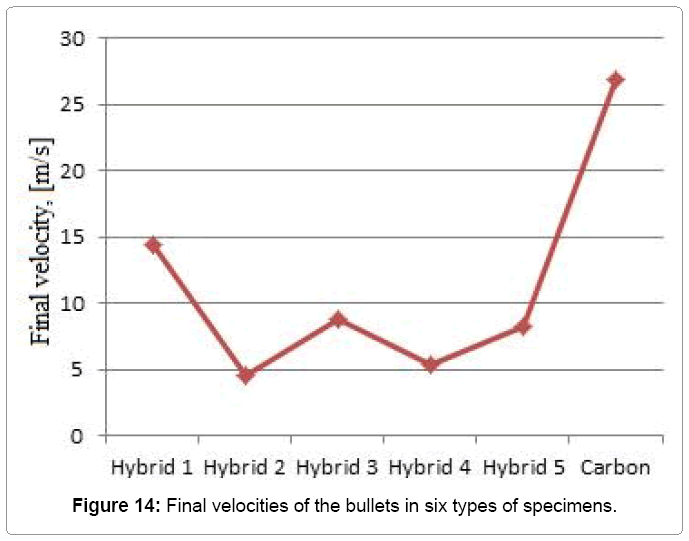Ballistic Materials And Penetration Mechanics Pdf

Ballistic Resistant Protective Materials. Ballistic resistant materials are used to. Greater penetration threat than an equivalent lead core round of the.
Ballistic Materials and Penetration Mechanics deals with ballistically protective materials and penetration mechanics. The book discusses historical and practical considerations of ballistic protection, including metallic armor, as well as ballistic testing methodology, the ability of a protective material to stop or slow down a particular projectile, and the theoretical aspects of penetration mechanics. It also highlights the importance of stress wave analysis in the penetration and spalling phenomena. Organized into 12 chapters, this volume begins with an overview of the history of the armor and the modern helmet. It proceeds with a discussion of variations in ballistic test methods, errors in test methods, and the importance of the hardness and geometry of both the target and the projectile.

The next chapters focus on the importance of fibrous armor, materials that are visually transparent and resistant to penetration by high-energy projectiles and fragments, and transparent armor and ceramic composite armor. The reader is also introduced to materials used in the design of metallic armor, the role of stress waves in the penetration problem, and the use of computer simulation to analyze ballistic impact experiments.
The book looks at numerical techniques for modeling hypervelocity impact and concludes with a chapter on the penetration mechanics of textile structures. This book is a valuable resource for scientists working at government, industrial, and university laboratories, as well as law enforcement officers and others who want information on materials that provide the best protection against damage from impacts, explosions, and bullets. Table of Contents. Introduction References Chapter 2. History of Armor I. Ancient armor II.
Modern body armor III. Modern helmet history References Chapter 3. Ballistic Testing Methodology I. Background II.
Introduction III. Test methodologies A. Pistol ball test B.
Arena test C. Side spray fragmentation test D. Forward spray test E.
Multiple cube tests F. Single cube test G. Single and multiple sphere tests H. Munition fragment test I. Fragment simulating projectile test J. Yaw dart projectile test K.
Parallelepiped test L. Shape factor M. Criteria for assessing the defeat of armor N. Critical angle tests O. Determination of ballistic limits P. Merit ratings Q.
Residual velocity test R. Transient and permanent deformation testing S. Resistance to shock test T. Resistance to spalling test U.
Lethality tests IV. Summary References Chapter 4. Fibrous Armor I. Introduction II.
Fabric armor IIl. Fiber parameters B. Fabrication parameters C. Dynamics of felt upon impact—theoretical studies D.
Felt deficiencies IV. Laminated fabrics A.
Fiberglass B. Kevlar® References Chapter 5. Transparent Armor I.
Introduction II. Historical III Ocular war injuries IV. Ballistic goggle and visor materials V.
Windshields VI. Structure/property relationships References Chapter 6. Ceramic Composite Armor I. Introduction II.
Component parts of composite armor A. The ceramic facing B. Backup materials IIl. Mechanisms References Chapter 7.
Metallic Armor Materials I. Introduction II. Characteristics of metal armor III. Armor types A.
Steel armor B. Aluminum armor C. Titanium armor References Chapter 8.
Weapon Effectiveness and Casualty Reduction Analysis I. Introduction II.
The threat A. Fragmentation characteristics III. The target IV. Target vulnerability V.
Casualties A. Lethal area B. Fraction casualties VI. Casualty reduction VII. An example References Chapter 9. The Role of Stress Waves in Penetration Processes I.
Introduction II. Brittle fractures produced by the reflection of stress waves III. Multiple scabbing IV.
Non-hookean behavior V. Stress waves produced by fractures VI. Maximum crack velocity VII. Penetration of targets by Munroe Jets VIII. Conclusions Acknowledgments References Chapter 10. Computer Simulation of Penetration Phenomena I.
Introduction II. Constitutive equations III. Target failure modes V. Important target and projectile parameters VI. Composite target VII.
Hypervelocity impact VIII. Constitutive model B. A method for determining the plastic work-hardening function Acknowledgment References Chapter 11.
Numerical Techniques for Modeling High Velocity Penetration and Perforation Processes I. Introduction II. Numerical techniques A. Lagrangian B.
Eulerian with explicit interface treatment III. Hypervelocity impact A. 2000 Solved Problems In Digital Electronics By Bali Pdf Files.
Semi-infinite targets B. Targets of finite thickness IV. Oblique impact V. Summary References Chapter 12.
Penetration Mechanics of Textile Structures I. Introduction II. Numerical analysis of impact on woven panels A.
Method of analysis B. Mathematical formulation C. Solution stability and convergence D. Incorporation of material property models E. Assessment of accuracy III. Influence of fiber properties on ballistic resistance References Index.